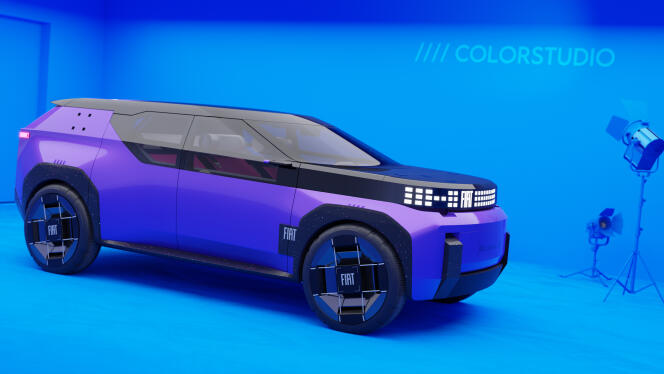Having been broken down for a long time, the Italian car is showing signs of restarting. Supported by the new Fiat 500 – not so new, in fact, since its appearance dates back to… 2007 – the transalpine automobile industry finally has other ambitions in Europe. After years of underinvestment, a legacy of the Marchionne years (named after Sergio Marchionne, the former emblematic boss of Fiat) which preceded the merger with PSA and the creation of the Stellantis group in 2021, a series of new models is being prepared to enter the scene.
On Monday February 26, Fiat lifted the veil on its next product plan, which plans to launch four vehicles in four years. Available in thermal and electric mode, they will try to break with the monoculture of small cars in which the manufacturer has locked itself. A few months after the electric Fiat 600, the new Panda will be presented on July 11: larger, squarer (like the founding model), but also more expensive, it will have a slightly raised driving position. Made in Serbia, this “mega-Panda” will not force the current model into retirement, whose career will continue for a few more years, under the name Pandina.
A pick-up called “Strada” will then be marketed, already known in South America and which Fiat assures could carve out a place for itself in Europe, then a sports SUV designed like a “fastback” (at the slightly receding roofline). Finally, the Italian brand will revive its long-abandoned tradition of family models. Thus, 2027 will see the appearance of a “giga-Panda”, a large SUV whose price will be accessible, promises the manufacturer.
Marketing gymnastics
This latest model most clearly reflects the brand’s new positioning: becoming an alternative to Dacia. A specialist in “low price” models for a clientele that is not necessarily penniless, the Renault group brand is breaking distribution and profitability records without any competition – including that of the 2016 Fiat Tipo – having yet been able to overshadow him. Decided to attack the positions conquered by the low-cost Franco-Romanian manufacturer, Fiat will have to face Citroën. Within the Stellantis group, the chevron firm also intends to play this role, particularly in the area of electric cars.
In order to carry out the reconstitution of a range which has never really recovered from the non-renewal of the Punto, Fiat intends to rely on the recipes which have made its past successes. After appealing to the spirits of the 500, and more recently the 600 of the 1960s, it is those of the Panda of the 1980s which are invoked.
You have 45.8% of this article left to read. The rest is reserved for subscribers.
